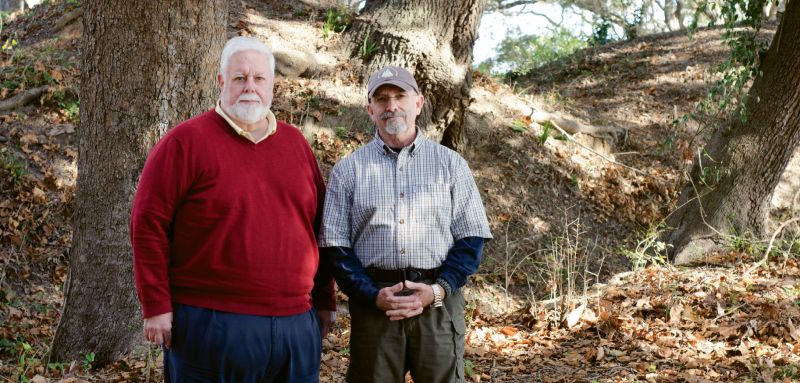
Theirs is a modern battle to protect centuries-old sites. Formed 25 years ago, the South Carolina Battleground Preservation Trust (SCBPT) specializes in saving historic military grounds from residential and commercial development; it’s preserved 36 thus far (find details on each at www.scbattlegroundtrust.org). To do so, it uses an arsenal of current technology, including infrared aerial surveys, terrestrial laser scans, and 3-D modeling software. “A wordy sign in a mound of dirt doesn’t excite the Xbox generation,” says executive director Doug Bostick.
SCBPT’s small army of staff and volunteers studies period documents and mile upon mile of aerial LiDAR (topography) images to locate forgotten battlegrounds. These experts also employ archaeological research—unearthing round balls, cannon shells, brass uniform trimmings, and saber and pistol remnants—to confirm the long-ago existence of forts, batteries, camps, and roadbeds. Ground-based LiDAR data then allows the nonprofit’s technicians to build virtual models of these structures.
The trust has now set its sights on the 250-plus Revolutionary War battles and skirmishes that occurred within our state lines. “Were it not for these critical battles, it’s likely the Americans would not have won,” explains Bostick, a historian and prolific author. Along with allies at the National Park Service and Campaign 1776 of the Civil War Trust, the team aims to create the South Carolina Liberty Trail, a four-part interpretive path of 71 battle sites from the Upstate to the ocean. Complete by early 2018, Trail One will highlight 20 spots from Moncks Corner to Lancaster. In the latter locale, SCBPT recently acquired 48 acres that were the site of the Battle of Waxhaws, a massacre of unarmed patriot soldiers. “Like ‘Remember Pearl Harbor,’ Waxhaws became a rallying cry that inspired patriots to act,” says Bostick.
This ambitious campaign will include the development of a free app that links to driving tours, maps, in-depth histories, and 3-D models of sites like Waxhaws. While costs for Trail One alone could tally $16 million, Bostick believes this to be money well spent. “Heritage tourism is a monster economic engine in this state,” he says, noting that the Liberty Trail will be marketed nationwide. But perhaps the greatest inspiration for such an undertaking is to honor those before us who paid the ultimate price. “To appreciate who we are and where we’re going as a culture, it’s critical to understand where we’ve been.”